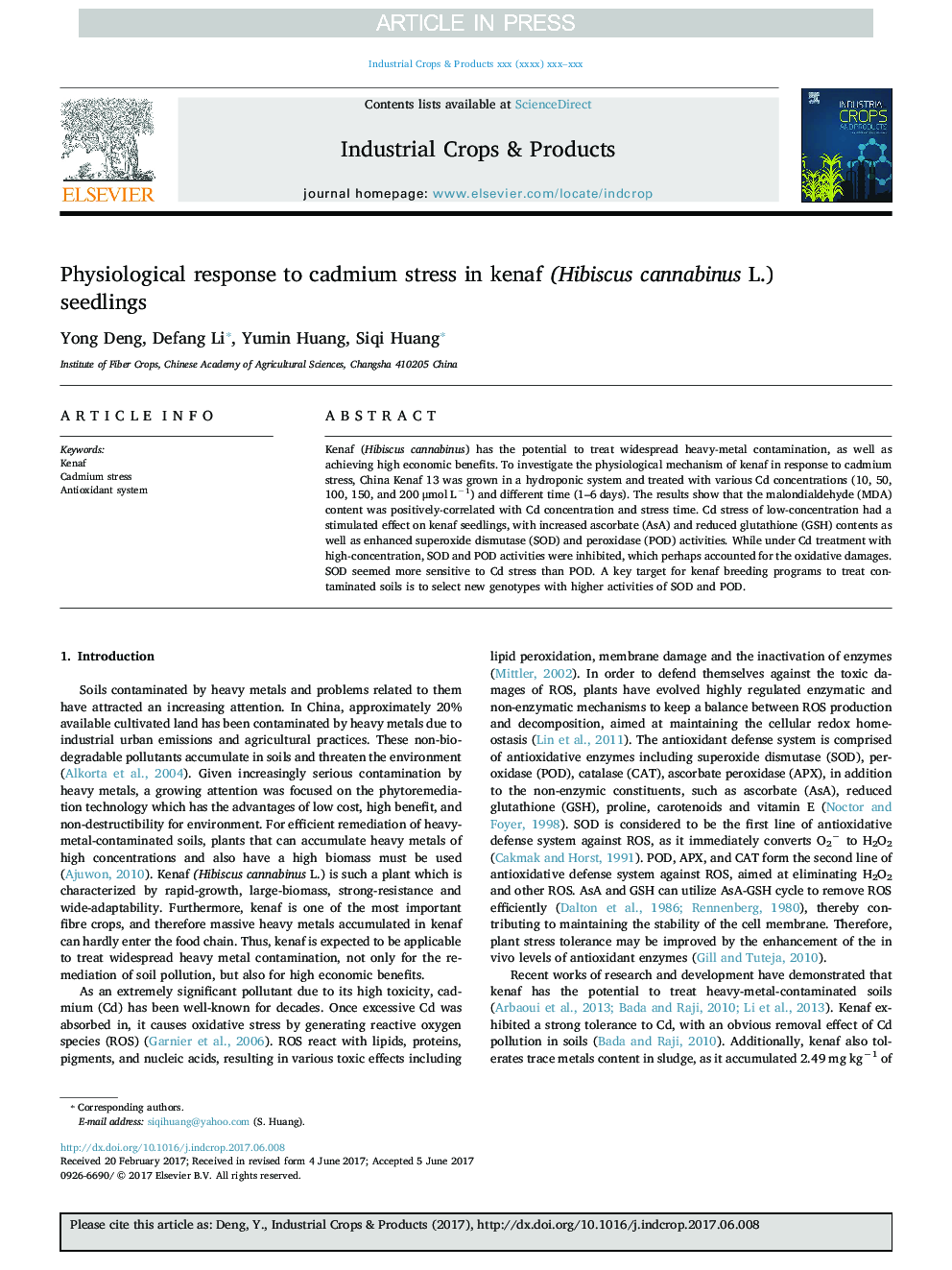| Article ID | Journal | Published Year | Pages | File Type |
|---|---|---|---|---|
| 5762027 | Industrial Crops and Products | 2017 | 5 Pages |
Abstract
Kenaf (Hibiscus cannabinus) has the potential to treat widespread heavy-metal contamination, as well as achieving high economic benefits. To investigate the physiological mechanism of kenaf in response to cadmium stress, China Kenaf 13 was grown in a hydroponic system and treated with various Cd concentrations (10, 50, 100, 150, and 200 μmol Lâ1) and different time (1-6 days). The results show that the malondialdehyde (MDA) content was positively-correlated with Cd concentration and stress time. Cd stress of low-concentration had a stimulated effect on kenaf seedlings, with increased ascorbate (AsA) and reduced glutathione (GSH) contents as well as enhanced superoxide dismutase (SOD) and peroxidase (POD) activities. While under Cd treatment with high-concentration, SOD and POD activities were inhibited, which perhaps accounted for the oxidative damages. SOD seemed more sensitive to Cd stress than POD. A key target for kenaf breeding programs to treat contaminated soils is to select new genotypes with higher activities of SOD and POD.
Related Topics
Life Sciences
Agricultural and Biological Sciences
Agronomy and Crop Science
Authors
Yong Deng, Defang Li, Yumin Huang, Siqi Huang,
